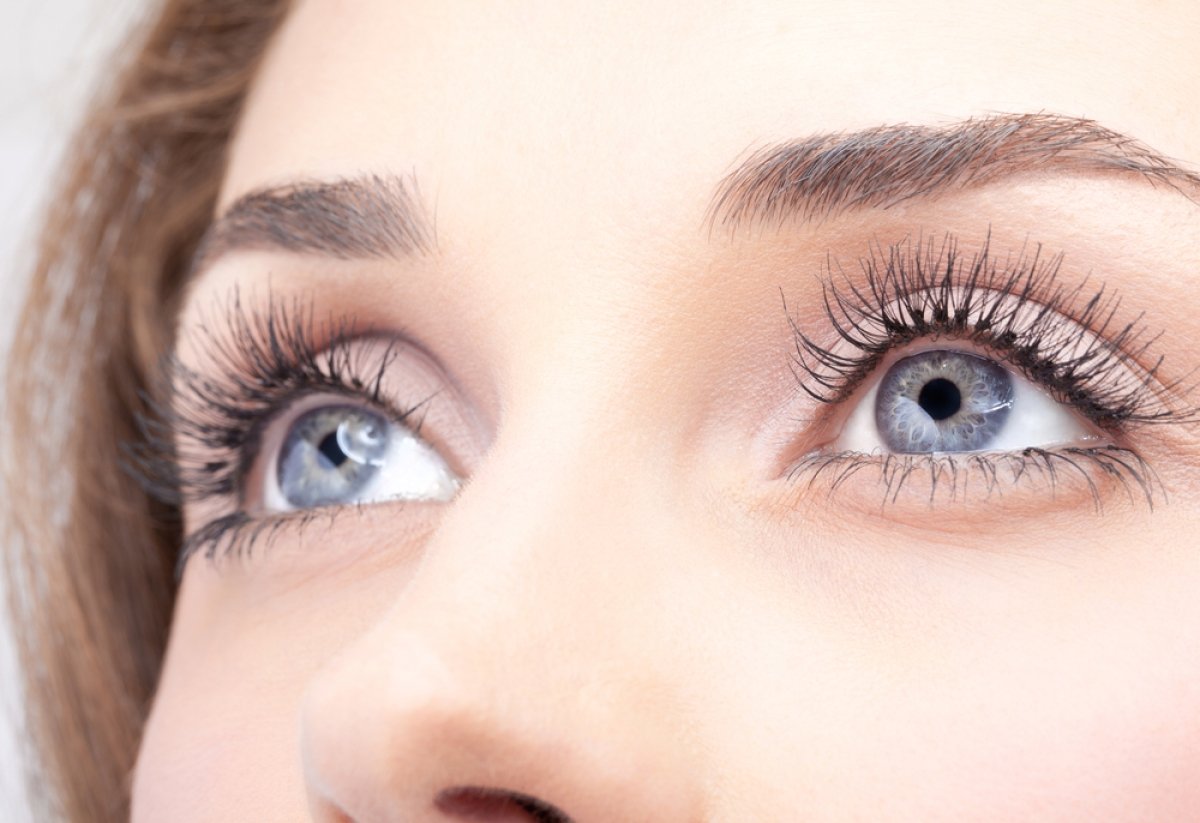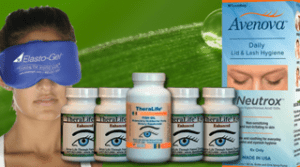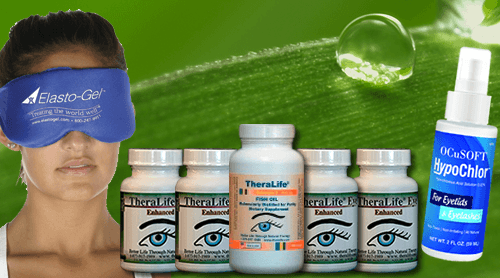Theralife.com offers a comprehensive approach to alleviating screen-induced dry eyes, emphasizing the benefits of their products for customers. Their natural remedies and dietary supplements, rich in omega-3 fatty acids and vitamins D and A, are designed to reduce ocular inflammation and support tear function, ensuring optimal eye health. Theralife’s unique approach focuses on holistic treatments that cater to individual needs, providing relief from various eye conditions like blepharitis, uveitis, and dry eyes. Their protective eyewear, including blue light-blocking lenses, aids in reducing screen exposure and discomfort.
Additionally, Theralife emphasizes environmental adjustments, such as using humidifiers and maintaining proper screen distance, to enhance eye comfort. By integrating these strategies with Theralife’s specialized products, customers can experience significant relief from eye discomfort and discover further solutions for maintaining ocular health.
Powerful Dry Eye Relief That Works – TheraLife
Add To Cart
Key Takeaways
- Follow the 20-20-20 rule to rest eyes: look at something 20 feet away for 20 seconds every 20 minutes.
- Include Omega-3 rich foods like wild salmon and flax seeds to reduce ocular inflammation.
- Use blue light glasses to minimize blue light exposure and alleviate dry eye symptoms.
- Enhance indoor humidity with a humidifier to stabilize tear film and reduce dryness.
- Perform controlled blinking exercises regularly to promote tear distribution and reduce dryness.
Screen Time Reduction
When aiming to alleviate dry eye symptoms, reducing screen time proves essential. Implementing a digital detox can greatly mitigate ocular discomfort. Begin by setting time limits on device usage, ensuring structured intervals for focused screen interaction. Utilize time management apps to monitor and curtail excessive exposure. Monitoring tools help in understanding device usage habits and can guide necessary adjustments. Engage in mindful usage by scheduling regular screen-free breaks, allowing ocular surfaces to recuperate. Adjust screen settings to minimize blue light emission and enhance viewing comfort. Create device-free zones to facilitate disconnecting from digital sources, promoting offline activities. Follow the 20-20-20 rule to intermittently rest your eyes. Maintaining optimal indoor humidity levels can also support tear production and comfort while using screens.
Dietary Enhancements
Enhancing your diet with specific nutrients can greatly alleviate dry eye symptoms. Omega-3 fatty acids, found in nutrient sources like wild salmon, tuna, and flax seeds, play a crucial role in reducing ocular inflammation and supporting cell membrane integrity. A balanced intake of vitamin D, obtainable from fortified dairy and sunlight exposure, is essential for tear film functionality and mitigating surface inflammation. A deficiency in Vitamin D is linked to an increased risk of ocular surface disorders, underscoring the importance of maintaining optimal serum levels for improved eye health. Vitamin A, sourced from orange vegetables and leafy greens, is significant for preventing dry eye symptoms by ensuring adequate conversion from beta carotene. Additionally, antioxidants and vitamins such as B12, E, and C contribute to ocular health by protecting against oxidative damage. Including omega-3 fish oil supplements in your diet may offer relief for dry eye symptoms, although research results are mixed. Achieving dietary balance with hydration, nutrient-rich foods, and diverse nutrient sources is necessary for maintaining optimal eye health.
Protective Eye Wear
Protective eyewear, such as blue light glasses, plays a pivotal role in managing dry eye syndrome, particularly for those frequently exposed to digital screens. These glasses reduce blue light exposure, helping alleviate symptoms. Studies reveal that lens types like FL-41 and blue-blocking lenses can improve visual acuity and relieve Computer Vision Syndrome (CVS)-related complaints. Prolonged exposure to blue light may disrupt circadian rhythm and melatonin production, making protective eyewear beneficial in enhancing visual comfort and health. Different lens types offer distinct eyewear benefits, targeting specific wavelengths to enhance visual comfort. Protective eyewear options, like TheraLife’s Ziena glasses, feature contour-fitting seals that block out wind and dust, providing additional benefits for managing dry eye symptoms.
| Lens Type | Eyewear Benefits |
|---|---|
| Blue Light | Reduces eye strain, improves tear stability |
| FL-41 Filtered | Eases photophobia, filters 480nm light |
| Yellow-Tinted | Cuts high-energy blue wavelengths |
| Wraparound Style | Minimizes overall light exposure |
Using these protective eyewear options in conjunction with eye drops and regular eye exams optimizes dry eye management.
Regular Eye Exercises
Although often overlooked, regular eye exercises are essential for managing dry eye syndrome, especially for individuals frequently exposed to screens. Research shows that taking breaks improves work efficiency and reduces strain, making it imperative to incorporate frequent breaks into your daily routine. Engaging in controlled blinking exercises enhances your blinking pattern, promoting tear distribution and reducing ocular surface dryness. Studies have shown that improved tear production can significantly alleviate symptoms of chronic dry eyes.
Implement a routine where you close your eyes normally for 2 seconds, then again for 2 seconds, and finally squeeze tightly for another 2 seconds—repeating this sequence 10 times. Incorporate the 20-20-20 rule by shifting focus every 20 minutes to a distant object, facilitating eye relaxation and preventing accommodative lockout.
Additionally, perform eye movement exercises like the figure 8 pattern to increase muscular flexibility and promote peripheral vision awareness. These structured routines mitigate eye strain and enhance overall visual comfort.
Environmental Adjustments
While managing dry eye syndrome, environmental adjustments play a critical role in alleviating symptoms. Enhancing indoor humidity through humidifiers mitigates tear evaporation, fostering ocular surface stability. Adjust your screen distance to at least 20 inches, promoting a healthier blink rate and reducing visual strain. Additionally, strategically arranging air conditioning systems prevents direct airflow on the face, which can exacerbate dryness. Environmental factors such as dry, dusty, or windy conditions can significantly increase tear evaporation, making it essential to control your indoor climate. Implement the following strategies:
- Humidification: Increase air moisture with humidifiers to stabilize tear film.
- Screen Placement: Maintain a minimum of 20-inch screen distance for ideal blink frequency.
- Ventilation: Guarantee proper ventilation to minimize indoor airborne irritants.
Another method to consider is using warm compresses multiple times a day, which can help improve eyelid health and reduce symptoms of dry eye. These evidence-based modifications can considerably reduce screen-induced dry eye symptoms, creating a more eye-friendly environment.
Powerful Dry Eye Relief That Works – TheraLife
Add To Cart
Frequently Asked Questions
Can Herbal Teas Help With Screen-Induced Dry Eyes?
Herbal teas offer compelling benefits for dry eyes.
Chamomile and green tea contain soothing ingredients with anti-inflammatory and antioxidant properties, potentially reducing irritation.
Ginkgo biloba may enhance ocular blood circulation, improving tear quality.
While herbal teas don’t directly increase tear production, they can provide symptomatic relief.
Regular intake of these teas, through consumption or as compresses, can support eye health.
Integrating them into your routine may mitigate screen-induced dryness.
How Effective Are Essential Oils for Dry Eye Relief?
Imagine essential oils as gentle streams soothing the land of dry eyes.
You’ve got lavender oil, known for its anti-inflammatory properties, which can alleviate irritation.
Chamomile oil, like a calming breeze, reduces redness and swelling.
Evidence suggests their biochemical actions contribute to improved tear film stability and ocular comfort.
However, these oils’ effectiveness varies by individual conditions, necessitating further clinical investigations to solidify their role in dry eye treatment.
Are There Any Specific Yoga Poses Beneficial for Dry Eyes?
You might find specific yoga poses beneficial for dry eyes, particularly those incorporating eye exercises and relaxation techniques.
Practices like palming and blinking exercises enhance relaxation by targeting extraocular muscles, promoting natural lubrication and reducing eye strain. These techniques can improve focus and alleviate dryness symptoms.
Although thorough evidence is limited, studies suggest combining these exercises with traditional remedies for best results in managing eye fatigue and improving overall eye health.
Can Acupuncture Aid in Reducing Dry Eye Symptoms?
You can reduce dry eye symptoms with acupuncture techniques, as studies show significant improvements in tear breakup time and Schirmer I test scores.
Proper needle placement stimulates points that enhance tear secretion and improve lacrimal gland function.
Acupuncture’s anti-inflammatory effects and impact on blood flow further aid symptom relief.
Guarantee a trained professional administers the treatment to maximize benefits while minimizing risks, as efficacy depends largely on precise technique.
Do Probiotics Play a Role in Managing Dry Eyes?
Imagine you take a probiotic containing the strain Limosilactobacillus reuteri DSM 17938.
Research indicates this strain could improve dry eye symptoms by enhancing gut health. It reduces inflammation and promotes healthier ocular surfaces.
In studies, mice treated with this probiotic showed increased goblet cell density, essential for tear production.
While promising, these findings highlight the need for further clinical trials to confirm probiotics’ role in managing dry eyes effectively.
Powerful Dry Eye Relief That Works – TheraLife
Add To Cart
Conclusion
TheraLife offers a range of products specifically designed to benefit customers dealing with various eye conditions, including screen-induced dry eyes. These products provide comprehensive solutions by enhancing ocular hydration and health through natural and scientifically-backed methods. TheraLife’s offerings include innovative supplements and treatments that address the root causes of eye discomfort, ensuring long-term relief and wellness.
TheraLife’s approach integrates the latest research in eye care to deliver effective results. Customers can experience relief from symptoms of dry eyes, blepharitis, and more with products that support overall eye health. Their solutions are crafted to work in synergy with healthy lifestyle practices, such as maintaining a nutrient-rich diet and using protective eyewear, to optimize eye comfort and performance.
By prioritizing eye health with TheraLife’s products, customers can effectively reduce digital eye strain and enjoy enhanced visual comfort in today’s screen-dominated environment. Embrace TheraLife’s expert-endorsed solutions to preserve the vitality and comfort of your eyes for lasting wellness.
Powerful Dry Eye Relief That Works – TheraLife
Add To Cart
References
- 1.
- The definition and classification of dry eye disease: report of the Definition and Classification Subcommittee of the International Dry Eye WorkShop (2007). Ocul Surf. 2007 Apr;5(2):75-92. [PubMed]
- 2.
- Huang R, Su C, Fang L, Lu J, Chen J, Ding Y. Dry eye syndrome: comprehensive etiologies and recent clinical trials. Int Ophthalmol. 2022 Oct;42(10):3253-3272. [PMC free article] [PubMed]
- 3.
- Craig JP, Nichols KK, Akpek EK, Caffery B, Dua HS, Joo CK, Liu Z, Nelson JD, Nichols JJ, Tsubota K, Stapleton F. TFOS DEWS II Definition and Classification Report. Ocul Surf. 2017 Jul;15(3):276-283. [PubMed]
- 4.
- King-Smith PE, Fink BA, Hill RM, Koelling KW, Tiffany JM. The thickness of the tear film. Curr Eye Res. 2004 Oct-Nov;29(4-5):357-68. [PubMed]
- 5.
- King-Smith PE, Fink BA, Fogt N, Nichols KK, Hill RM, Wilson GS. The thickness of the human precorneal tear film: evidence from reflection spectra. Invest Ophthalmol Vis Sci. 2000 Oct;41(11):3348-59. [PubMed]
- 6.
- Chen Q, Wang J, Tao A, Shen M, Jiao S, Lu F. Ultrahigh-resolution measurement by optical coherence tomography of dynamic tear film changes on contact lenses. Invest Ophthalmol Vis Sci. 2010 Apr;51(4):1988-93. [PMC free article] [PubMed]
- 7.
- Willcox MDP, Argüeso P, Georgiev GA, Holopainen JM, Laurie GW, Millar TJ, Papas EB, Rolland JP, Schmidt TA, Stahl U, Suarez T, Subbaraman LN, Uçakhan OÖ, Jones L. TFOS DEWS II Tear Film Report. Ocul Surf. 2017 Jul;15(3):366-403. [PMC free article] [PubMed]
- 8.
- Peng CC, Cerretani C, Braun RJ, Radke CJ. Evaporation-driven instability of the precorneal tear film. Adv Colloid Interface Sci. 2014 Apr;206:250-64. [PubMed]
- 9.
- Zhou L, Beuerman RW. Tear analysis in ocular surface diseases. Prog Retin Eye Res. 2012 Nov;31(6):527-50. [PubMed]
- 10.
- Mantelli F, Mauris J, Argüeso P. The ocular surface epithelial barrier and other mechanisms of mucosal protection: from allergy to infectious diseases. Curr Opin Allergy Clin Immunol. 2013 Oct;13(5):563-8. [PMC free article] [PubMed]
- 11.
- O’Neil EC, Henderson M, Massaro-Giordano M, Bunya VY. Advances in dry eye disease treatment. Curr Opin Ophthalmol. 2019 May;30(3):166-178. [PMC free article] [PubMed]
- 12.
- Fjaervoll K, Fjaervoll H, Magno M, Nøland ST, Dartt DA, Vehof J, Utheim TP. Review on the possible pathophysiological mechanisms underlying visual display terminal-associated dry eye disease. Acta Ophthalmol. 2022 Dec;100(8):861-877. [PMC free article] [PubMed]
- 13.
- Craig JP, Nelson JD, Azar DT, Belmonte C, Bron AJ, Chauhan SK, de Paiva CS, Gomes JAP, Hammitt KM, Jones L, Nichols JJ, Nichols KK, Novack GD, Stapleton FJ, Willcox MDP, Wolffsohn JS, Sullivan DA. TFOS DEWS II Report Executive Summary. Ocul Surf. 2017 Oct;15(4):802-812. [PubMed]
- 14.
- Qian L, Wei W. Identified risk factors for dry eye syndrome: A systematic review and meta-analysis. PLoS One. 2022;17(8):e0271267. [PMC free article] [PubMed]
- 15.
- I Y Hasan ZA. Dry eye syndrome risk factors: A systemic review. Saudi J Ophthalmol. 2021 Apr-Jun;35(2):131-139. [PMC free article] [PubMed]
- 16.
- Paulsen AJ, Cruickshanks KJ, Fischer ME, Huang GH, Klein BE, Klein R, Dalton DS. Dry eye in the beaver dam offspring study: prevalence, risk factors, and health-related quality of life. Am J Ophthalmol. 2014 Apr;157(4):799-806. [PMC free article] [PubMed]
- 17.
- Chang CJ, Somohano K, Zemsky C, Uhlemann AC, Liebmann J, Cioffi GA, Al-Aswad LA, Lynch SV, Winn BJ. Topical Glaucoma Therapy Is Associated With Alterations of the Ocular Surface Microbiome. Invest Ophthalmol Vis Sci. 2022 Aug 02;63(9):32. [PMC free article] [PubMed]
- 18.
- Andole S, Senthil S. Ocular Surface Disease and Anti-Glaucoma Medications: Various features, Diagnosis, and Management Guidelines. Semin Ophthalmol. 2023 Feb;38(2):158-166. [PubMed]
- 19.
- Sobolewska B, Schaller M, Zierhut M. Rosacea and Dry Eye Disease. Ocul Immunol Inflamm. 2022 Apr 03;30(3):570-579. [PubMed]
- 20.
- Bilgic AA, Kocabeyoglu S, Dikmetas O, Tan C, Karakaya J, Irkec M. Influence of video display terminal use and meibomian gland dysfunction on the ocular surface and tear neuromediators. Int Ophthalmol. 2023 May;43(5):1537-1544. [PubMed]
- 21.
- Al Sabti K, Zechevikj S, Raizada S. Evaluation of lipid layer tear film changes after femtosecond small incision lenticule extraction. Ther Adv Ophthalmol. 2022 Jan-Dec;14:25158414221129534. [PMC free article] [PubMed]
- 22.
- Napoli PE, Nioi M, Iovino C, Sanna R, d’Aloja E, Fossarello M. Ocular surface and respiratory tract damages from occupational, sub-chronic exposure to fluorspar: case report and other considerations. Int Ophthalmol. 2019 May;39(5):1175-1178. [PubMed]
- 23.
- Suárez-Cortés T, Merino-Inda N, Benitez-Del-Castillo JM. Tear and ocular surface disease biomarkers: A diagnostic and clinical perspective for ocular allergies and dry eye disease. Exp Eye Res. 2022 Aug;221:109121. [PubMed]
- 24.
- Truong S, Cole N, Stapleton F, Golebiowski B. Sex hormones and the dry eye. Clin Exp Optom. 2014 Jul;97(4):324-36. [PubMed]
- 25.
- Talens-Estarelles C, García-Marqués JV, Cerviño A, García-Lázaro S. Dry Eye-Related Risk Factors for Digital Eye Strain. Eye Contact Lens. 2022 Oct 01;48(10):410-415. [PubMed]
- 26.
- Chakraborty U, Chandra A. Bitot’s spots, dry eyes, and night blindness indicate vitamin A deficiency. Lancet. 2021 Jan 16;397(10270):e2. [PubMed]
- 27.
- Altinbas E, Elibol A, Fıratlı G, Ayhan C, Celebi ARC. Assessment of risk factors on eye dryness in young adults using visual display device in both contact lens wearers and non-wearers. Int Ophthalmol. 2023 Feb;43(2):441-450. [PMC free article] [PubMed]
- 28.
- Trindade M, Rodrigues M, Pozzebon ME, Aranha FJP, Colella MP, Fernandes A, Fornazari DO, de Almeida Borges D, Vigorito AC, Alves M. A plethora of ocular surface manifestations in a multidisciplinary ocular graft-versus-host disease unit. Sci Rep. 2022 Sep 23;12(1):15926. [PMC free article] [PubMed]
- 29.
- Choudhry HS, Hosseini S, Choudhry HS, Fatahzadeh M, Khianey R, Dastjerdi MH. Updates in diagnostics, treatments, and correlations between oral and ocular manifestations of Sjogren’s syndrome. Ocul Surf. 2022 Oct;26:75-87. [PubMed]
- 30.
- Zou X, Lu L, Xu Y, Zhu J, He J, Zhang B, Zou H. Prevalence and clinical characteristics of dry eye disease in community-based type 2 diabetic patients: the Beixinjing eye study. BMC Ophthalmol. 2018 May 10;18(1):117. [PMC free article] [PubMed]
- 31.
- Feroze KB, Kaufman EJ. StatPearls [Internet]. StatPearls Publishing; Treasure Island (FL): Apr 17, 2023. Xerophthalmia. [PubMed]
- 32.
- Palma JA, Norcliffe-Kaufmann L, Fuente-Mora C, Percival L, Mendoza-Santiesteban C, Kaufmann H. Current treatments in familial dysautonomia. Expert Opin Pharmacother. 2014 Dec;15(18):2653-71. [PMC free article] [PubMed]
- 33.
- Moon J, Yoon CH, Choi SH, Kim MK. Can Gut Microbiota Affect Dry Eye Syndrome? Int J Mol Sci. 2020 Nov 10;21(22) [PMC free article] [PubMed]
- 34.
- Khanna RK, Catanese S, Emond P, Corcia P, Blasco H, Pisella PJ. Metabolomics and lipidomics approaches in human tears: A systematic review. Surv Ophthalmol. 2022 Jul-Aug;67(4):1229-1243. [PubMed]
- 35.
- Andersen HH, Yosipovitch G, Galor A. Neuropathic symptoms of the ocular surface: dryness, pain, and itch. Curr Opin Allergy Clin Immunol. 2017 Oct;17(5):373-381. [PMC free article] [PubMed]
- 36.
- Tandon R, Vashist P, Gupta N, Gupta V, Sahay P, Deka D, Singh S, Vishwanath K, Murthy GVS. Association of dry eye disease and sun exposure in geographically diverse adult (≥40 years) populations of India: The SEED (sun exposure, environment and dry eye disease) study – Second report of the ICMR-EYE SEE study group. Ocul Surf. 2020 Oct;18(4):718-730. [PubMed]
- 37.
- van Setten G, Labetoulle M, Baudouin C, Rolando M. Evidence of seasonality and effects of psychrometry in dry eye disease. Acta Ophthalmol. 2016 Aug;94(5):499-506. [PubMed]
- 38.
- Md Isa NA, Koh PY, Doraj P. The Tear Function in Electronic Cigarette Smokers. Optom Vis Sci. 2019 Sep;96(9):678-685. [PubMed]
- 39.
- Magno MS, Daniel T, Morthen MK, Snieder H, Jansonius N, Utheim TP, Hammond CJ, Vehof J. The relationship between alcohol consumption and dry eye. Ocul Surf. 2021 Jul;21:87-95. [PubMed]
- 40.
- Yu X, Guo H, Liu X, Wang G, Min Y, Chen SS, Han SS, Chang RT, Zhao X, Hsing A, Zhu S, Yao K. Dry eye and sleep quality: a large community-based study in Hangzhou. Sleep. 2019 Oct 21;42(11) [PubMed]
- 41.
- García-Marqués JV, Talens-Estarelles C, García-Lázaro S, Wolffsohn JS, Cerviño A. Systemic, environmental and lifestyle risk factors for dry eye disease in a mediterranean caucasian population. Cont Lens Anterior Eye. 2022 Oct;45(5):101539. [PubMed]
- 42.
- Choi HR, Lee JH, Lee HK, Song JS, Kim HC. Association Between Dyslipidemia and Dry Eye Syndrome Among the Korean Middle-Aged Population. Cornea. 2020 Feb;39(2):161-167. [PubMed]
- 43.
- Stapleton F, Alves M, Bunya VY, Jalbert I, Lekhanont K, Malet F, Na KS, Schaumberg D, Uchino M, Vehof J, Viso E, Vitale S, Jones L. TFOS DEWS II Epidemiology Report. Ocul Surf. 2017 Jul;15(3):334-365. [PubMed]
- 44.
- Fjaervoll H, Fjaervoll K, Magno M, Moschowits E, Vehof J, Dartt DA, Utheim TP. The association between visual display terminal use and dry eye: a review. Acta Ophthalmol. 2022 Jun;100(4):357-375. [PubMed]
- 45.
- Tan LL, Morgan P, Cai ZQ, Straughan RA. Prevalence of and risk factors for symptomatic dry eye disease in Singapore. Clin Exp Optom. 2015 Jan;98(1):45-53. [PubMed]
- 46.
- Saxena R, Srivastava S, Trivedi D, Anand E, Joshi S, Gupta SK. Impact of environmental pollution on the eye. Acta Ophthalmol Scand. 2003 Oct;81(5):491-4. [PubMed]
- 47.
- Rolando M, Cantera E, Mencucci R, Rubino P, Aragona P. The correct diagnosis and therapeutic management of tear dysfunction: recommendations of the P.I.C.A.S.S.O. board. Int Ophthalmol. 2018 Apr;38(2):875-895. [PMC free article] [PubMed]
- 48.
- Sheppard J, Shen Lee B, Periman LM. Dry eye disease: identification and therapeutic strategies for primary care clinicians and clinical specialists. Ann Med. 2023 Dec;55(1):241-252. [PMC free article] [PubMed]
- 49.
- Dunn JD, Karpecki PM, Meske ME, Reissman D. Evolving knowledge of the unmet needs in dry eye disease. Am J Manag Care. 2021 Mar;27(2 Suppl):S23-S32. [PubMed]
- 50.
- Shetty R, Sethu S. Newer paradigms in dry eye disease research. Indian J Ophthalmol. 2023 Apr;71(4):1064. [PMC free article] [PubMed]
- 51.
- Mohamed HB, Abd El-Hamid BN, Fathalla D, Fouad EA. Current trends in pharmaceutical treatment of dry eye disease: A review. Eur J Pharm Sci. 2022 Aug 01;175:106206. [PubMed]
- 52.
- Henrioux F, Navel V, Belville C, Charnay C, Antoine A, Chiambaretta F, Sapin V, Blanchon L. Inflammation of Dry Eye Syndrome: A Cellular Study of the Epithelial and Macrophagic Involvement of NFAT5 and RAGE. Int J Mol Sci. 2023 Jul 04;24(13) [PMC free article] [PubMed]
- 53.
- Garrigue JS, Amrane M, Faure MO, Holopainen JM, Tong L. Relevance of Lipid-Based Products in the Management of Dry Eye Disease. J Ocul Pharmacol Ther. 2017 Nov;33(9):647-661. [PMC free article] [PubMed]
- 54.
- Bron AJ, de Paiva CS, Chauhan SK, Bonini S, Gabison EE, Jain S, Knop E, Markoulli M, Ogawa Y, Perez V, Uchino Y, Yokoi N, Zoukhri D, Sullivan DA. TFOS DEWS II pathophysiology report. Ocul Surf. 2017 Jul;15(3):438-510. [PubMed]
- 55.
- Asiedu K, Kyei S, Mensah SN, Ocansey S, Abu LS, Kyere EA. Ocular Surface Disease Index (OSDI) Versus the Standard Patient Evaluation of Eye Dryness (SPEED): A Study of a Nonclinical Sample. Cornea. 2016 Feb;35(2):175-80. [PubMed]
- 56.
- Akowuah PK, Adjei-Anang J, Nkansah EK, Fummey J, Osei-Poku K, Boadi P, Frimpong AA. Comparison of the performance of the dry eye questionnaire (DEQ-5) to the ocular surface disease index in a non-clinical population. Cont Lens Anterior Eye. 2022 Jun;45(3):101441. [PubMed]
- 57.
- Martin R, Emo Research Group Comparison of the Ocular Surface Disease Index and the Symptom Assessment in Dry Eye Questionnaires for Dry Eye Symptom Assessment. Life (Basel). 2023 Sep 21;13(9) [PMC free article] [PubMed]
- 58.
- Wolffsohn JS, Arita R, Chalmers R, Djalilian A, Dogru M, Dumbleton K, Gupta PK, Karpecki P, Lazreg S, Pult H, Sullivan BD, Tomlinson A, Tong L, Villani E, Yoon KC, Jones L, Craig JP. TFOS DEWS II Diagnostic Methodology report. Ocul Surf. 2017 Jul;15(3):539-574. [PubMed]
- 59.
- Tagawa Y, Noda K, Ohguchi T, Tagawa Y, Ishida S, Kitaichi N. Corneal hyperalgesia in patients with short tear film break-up time dry eye. Ocul Surf. 2019 Jan;17(1):55-59. [PubMed]
- 60.
- Nichols KK, Mitchell GL, Zadnik K. The repeatability of clinical measurements of dry eye. Cornea. 2004 Apr;23(3):272-85. [PubMed]
- 61.
- Schulze K, Großjohann R, Paul S, Bossaller L, Tost F. [Schirmer’s test and strip meniscometry : Comparative consideration in the diagnostics of dry eye]. Ophthalmologe. 2021 Jun;118(6):561-568. [PubMed]
- 62.
- Brott NR, Zeppieri M, Ronquillo Y. StatPearls [Internet]. StatPearls Publishing; Treasure Island (FL): Feb 24, 2024. Schirmer Test. [PubMed]
- 63.
- Miyasaka K, Kazama Y, Iwashita H, Wakaiki S, Saito A. A novel strip meniscometry method for measuring aqueous tear volume in dogs: Clinical correlations with the Schirmer tear and phenol red thread tests. Vet Ophthalmol. 2019 Nov;22(6):864-871. [PubMed]
- 64.
- Whitcher JP, Shiboski CH, Shiboski SC, Heidenreich AM, Kitagawa K, Zhang S, Hamann S, Larkin G, McNamara NA, Greenspan JS, Daniels TE., Sjögren’s International Collaborative Clinical Alliance Research Groups. A simplified quantitative method for assessing keratoconjunctivitis sicca from the Sjögren’s Syndrome International Registry. Am J Ophthalmol. 2010 Mar;149(3):405-15. [PMC free article] [PubMed]
- 65.
- Bron AJ, Evans VE, Smith JA. Grading of corneal and conjunctival staining in the context of other dry eye tests. Cornea. 2003 Oct;22(7):640-50. [PubMed]
- 66.
- Korb DR, Herman JP, Greiner JV, Scaffidi RC, Finnemore VM, Exford JM, Blackie CA, Douglass T. Lid wiper epitheliopathy and dry eye symptoms. Eye Contact Lens. 2005 Jan;31(1):2-8. [PubMed]
- 67.
- Schulze MM, Ng A, Yang M, Panjwani F, Srinivasan S, Jones LW, Senchyna M. Bulbar Redness and Dry Eye Disease: Comparison of a Validated Subjective Grading Scale and an Objective Automated Method. Optom Vis Sci. 2021 Feb 01;98(2):113-120. [PubMed]
- 68.
- Guzmán M, Miglio M, Keitelman I, Shiromizu CM, Sabbione F, Fuentes F, Trevani AS, Giordano MN, Galletti JG. Transient tear hyperosmolarity disrupts the neuroimmune homeostasis of the ocular surface and facilitates dry eye onset. Immunology. 2020 Oct;161(2):148-161. [PMC free article] [PubMed]
- 69.
- Kaufman HE. The practical detection of mmp-9 diagnoses ocular surface disease and may help prevent its complications. Cornea. 2013 Feb;32(2):211-6. [PubMed]
- 70.
- Sędzikowska A, Tarkowski W, Moneta-Wielgoś J, Grzyliński K, Tarkowski G, Młocicki D. Effect of ocular demodicosis on the stability of the tear film and the tear break up time. Sci Rep. 2021 Dec 21;11(1):24296. [PMC free article] [PubMed]
- 71.
- Korb DR, Greiner JV, Herman JP, Hebert E, Finnemore VM, Exford JM, Glonek T, Olson MC. Lid-wiper epitheliopathy and dry-eye symptoms in contact lens wearers. CLAO J. 2002 Oct;28(4):211-6. [PubMed]
- 72.
- Yasar E, Kemeriz F, Gurlevik U. Evaluation of dry eye disase and meibomian gland dysfunction with meibography in seborrheic dermatitis. Cont Lens Anterior Eye. 2019 Dec;42(6):675-678. [PubMed]
- 73.
- Shew W, Muntz A, Dean SJ, Pult H, Wang MTM, Craig JP. Blinking and upper eyelid morphology. Cont Lens Anterior Eye. 2022 Dec;45(6):101702. [PubMed]
- 74.
- Akpek EK, Bunya VY, Saldanha IJ. Sjögren’s Syndrome: More Than Just Dry Eye. Cornea. 2019 May;38(5):658-661. [PMC free article] [PubMed]
- 75.
- Apaydın H, Koca Bicer C, Feyza Yurt E, Abdulkadir Serdar M, Dogan İ, Erten S. Elevated Kynurenine Levels in Patients with Primary Sjögren’s Syndrome. Lab Med. 2023 Mar 07;54(2):166-172. [PubMed]
- 76.
- Morthen MK, Magno MS, Utheim TP, Snieder H, Hammond CJ, Vehof J. The physical and mental burden of dry eye disease: A large population-based study investigating the relationship with health-related quality of life and its determinants. Ocul Surf. 2021 Jul;21:107-117. [PubMed]
- 77.
- Chao C, Golebiowski B, Stapleton F. The role of corneal innervation in LASIK-induced neuropathic dry eye. Ocul Surf. 2014 Jan;12(1):32-45. [PubMed]
- 78.
- Li M, Gong L, Sun X, Chapin WJ. Anxiety and depression in patients with dry eye syndrome. Curr Eye Res. 2011 Jan;36(1):1-7. [PubMed]
- 79.
- Ayaki M, Kawashima M, Negishi K, Tsubota K. High prevalence of sleep and mood disorders in dry eye patients: survey of 1,000 eye clinic visitors. Neuropsychiatr Dis Treat. 2015;11:889-94. [PMC free article] [PubMed]
- 80.
- Aldaas KM, Ismail OM, Hakim J, Van Buren ED, Lin FC, Hardin JS, Meyer JJ. Association of Dry Eye Disease With Dyslipidemia and Statin Use. Am J Ophthalmol. 2020 Oct;218:54-58. [PMC free article] [PubMed]
- 81.
- Ismail OM, Poole ZB, Bierly SL, Van Buren ED, Lin FC, Meyer JJ, Davis RM. Association Between Dry Eye Disease and Migraine Headaches in a Large Population-Based Study. JAMA Ophthalmol. 2019 May 01;137(5):532-536. [PMC free article] [PubMed]





